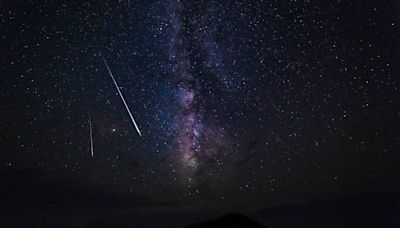Search results
Jul 31, 2023 · Comets are defined as icy bodies of frozen gases, rocks and dust left over from the formation of the solar system about 4.6 billion years ago. They orbit the sun in highly elliptical orbits that...
Apr 22, 2024 · Comets, such as the comet ISON pictured here, are thought to hold material from the time when the Sun and planets were forming. They are like giant, frozen time capsules in our solar system. Credit: NASA/MSFC/Aaron Kingery.
Apr 25, 2024 · Comet, a small body orbiting the Sun with a substantial fraction of its composition made up of volatile ices. Comets are among the most-spectacular objects in the sky, with their bright glowing comae and their long tails. Comets can appear at random from any direction as they move in eccentric orbits around the Sun.
Comets actually have two tails―a dust tail and an ion (gas) tail. Most comets travel a safe distance from the Sun―comet Halley comes no closer than 89 million kilometers (55 million miles). However, some comets, called sungrazers, crash straight into the Sun or get so close that they break up and evaporate.
Jan 31, 2023 · By Patrick Hughes,BBC News Climate and Science. Dan Bartlett. The comet C/2022 E3 (ZTF) as seen through a telescope. A newly discovered comet will make its closest approach to our planet on ...
Feb 1, 2023 · On the evening of February 1, the comet is making its closest approach to Earth in 50,000 years—providing a vibrant glimpse into one of the building blocks of our cosmic home.
Jan 6, 2023 · The dynamical class of a comet refers to the reservoir from which it was perturbed into the inner solar system. The two major groups are the short-period comets (SPCs), with orbital periods up to ...




